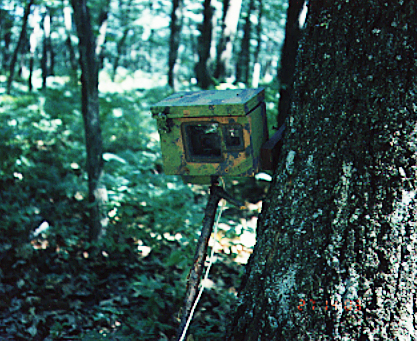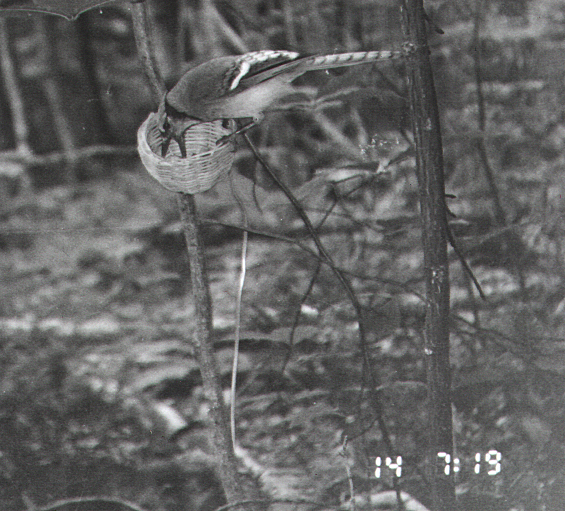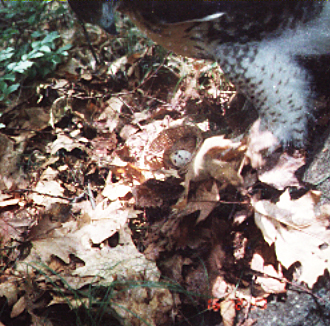Graduate School at U-Mass, Amherst
Every waking moment of 1992-1995

My research required that I find eight forests in western Massachusetts; 4 that were near suburban development and 4 that were in rural areas. My specific goal was to determine if there was any difference in the predators of bird eggs in the two types of forests.

Now there are many ways to identify predators that visit bird nests, but I was determined to employ the least intrusive methods possible. As a result, I decided that cameras were the key because they were non-leathal, quiet, and relatively easy to handle. Little did I know how difficult they would prove to be!
I developed my own camera system and deployed 100 cameras across 4 study sites during each year of the project. After a few glitches were worked out of the systems they worked like a charm. This experience, along with the development of a database system to keep track of the photos, formed the foundation of my future career as a nature photographer.
One of the first photos that my system produced was this picture of a blue jay raiding one of my artificial bird nests.
Blue jays were important predators in the first year of the study, but a sever winter may have reduced their numbders becasue they simply seemed to disappear in following years.

The big surprise was the discovery that bears were a major predator of bird nests.

The bear pictured here is actually wearing a radio telemetry collar and I was able to go to the "Bear Guy" in my department and ask him if he could keep his research subjects under control.
Looking at my film for the first time was always exciting because I was never sure what animal was going to appear on the film. Raccoons were regular visitors, and their antics were always fun to see. Sometimes they were clowning around, sometimes they looked guilty, and other times they just looked like any regular family going out for dinner.

Blue jays, bears, and raccoons were the three major predaors in my project. It is interesting to note that they are all generalist predators, which means they will eat just about anything.
Then, of course, there were those particularly funny moments when unexpected species showed up. Mice, like the one shown below, were probably excluded from the project because the quail eggs I used in the nests were too big for them to handle. This did not prevent mice from getting in the mix, however.

In addition to mice I recorded photographs of deer, turkeys, thrushes, skunks, domestic cats, domestic dogs, porcupines, flying squirrels, chipmunks, gray squirrels, fishers, a daddy longlegs, and even a couple people. But the strangest animal to appear on film was the red-shouldered hawk pictured below. What this bird could possibly have been doing I have no idea. The only thing that makes any sense is that one of the mice that occasionally messed around with my cameras may have narrowly escaped the attack of the hawk, triggering the camera in the process.

Copyright 2006 William Danielson